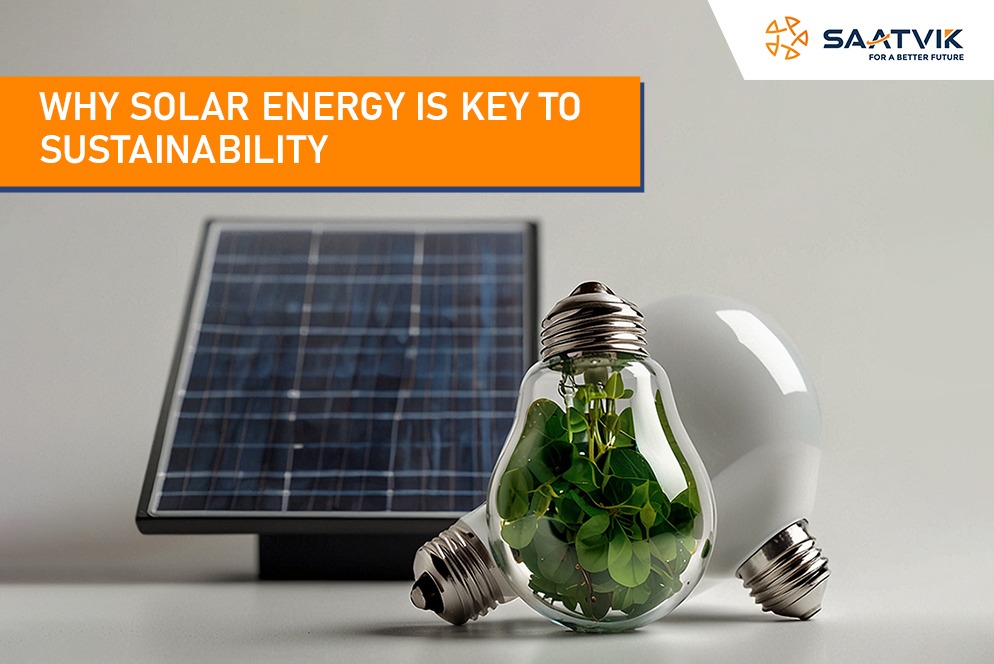India stands at a pivotal moment in its expansion phase, where economic growth should go hand-in-hand with environmental sustainability. There are solutions for a greener future, but solar energy in India emerges as the key driver. The constant efforts of India are bearing fruit. India is planning to become a self-reliant solar energy-producing nation and aims to produce five tons of green hydrogen by the end of 2030. Don’t think of solar energy as just the solution to India’s energy hurdle, but also as the way to attain sustainable development goals.
Let’s walk down till the end of this write-up to witness how solar is the essence behind the making of a sustainable India.
Scenario of Growing Demand for Solar Energy in India
No one disagrees, “India is one of the fastest-growing economies in the world,” and with this, the demand for energy also grows in parallelly. A study shows that the energy consumption of India is expected to double by the end of 2040.
Before the advent of solar energy, coal was the primary & dominant source of electricity, causing pollution and greenhouse gas emissions. To tackle this and stand by the global climate guidelines, India has been rapidly shifting towards renewable energy, with solar energy leading at the front.
Why Solar Energy in India Is Imperative for a Sustainable Future?
The need for greener energy sources has increased, apparently, in today’s context. Several problems in conventional energy elevate solar energy in India and highlight the importance of greener energy sources. Here is a comparison given between solar energy and conventional energy, enough to explain why the first one is better.
- Conventional energy sources, including fossil fuels, cause the depletion of fossils; in contrast, solar energy demands sunlight only.
- Conventional sources of energy are limited, but sunlight is available in abundance.
- High fuel costs and operational expenses are included in conventional energy sources. On the other hand, though the starting cost of solar power plants is high, it will certainly give long-term savings.
Furthermore, solar panel installations are flexible and can easily be deployed in diverse settings, right from large utility-scale parks to rooftop systems in both rural and urban areas. This decentralized nature of solar energy makes sure that even remote villages can get hold of clean electricity.
Role of Solar Energy in India’s Sustainable Development
Solar is not just a way of lighting but an important aspect of sustainable development initiatives. Having understood the relation between solar energy and sustainable development, look at where solar energy in India is leaving its impact.
- Energy Independence
The use of solar energy pushes us away from the dependency on the import of fossil fuels. It boosts national security while protecting the economy from the volatility of international oil prices.
- Community Empowerment
Another benefit of solar energy projects is that they can engage community members in the implementation process. It leads to accountability, thus promoting a sense of sustainability and community involvement.
- Resilience Against Climate Change
Solar energy can easily adapt to the effects of climate change. For instance, decentralized solar power installation can generate power even during calamities when the main power supply infrastructure can collapse; critical functions must proceed.
Government Initiatives Driving Adoption of Solar Energy in India
The Indian government has been so impressive in promoting solar energy in India by implementing various initiatives. It is justified by the National Solar Mission, launched in 2010, which targets to install 100 GW of solar capacity by the end of 2022. While this target has faced some delays, it has sparked crucial momentum in the domain. In recent times, the government has altered its target to attain 280 GW of solar capacity by 2030 as a part of its broader goal of 500 GW of non-fossil fuel capacity.
The Indian government is striving really hard for the future of solar energy in India and has initiated schemes like PM-KUSUM. What they are aiming for is to solarize agriculture by empowering the farmers to install solar pumps. It will reduce the level of reliance they have on diesel and on-grid electricity. Now, all the residential and commercial users can fetch clean energy seamlessly because of subsidies and incentives.
Leading the Change to Solar for Sustainable India
As India stands on top by embracing solar energy with both hands, companies in the solar domain are critical in hastening this shift. They are not only focusing on India’s energy needs but also setting some touchstones for the solar manufacturing ecosystem.
Top-of-the-range manufacturing facilities, a focus on producing high-efficiency modules like Mono PERC & N-Type TOPCon, and an expansive distribution network are all what’s going on in such companies. These things reflect their robust vision of being a key player in India’s green journey.
Towards a Greener Future!
The path to a sustainable India is certainly illuminated by the sun. Solar Energy in India isn’t an alternative — it is an imperative. It will take care of all the environmental concerns, solidify energy security, and accelerate inclusive growth.
Through ongoing investment, policy implementation, and public awareness, solar energy will indeed transform India’s energy landscape and help in building a cleaner, prosperous, and sustainable nation.
Embracing solar will not just let India harness the power of the sun but also let it empower itself for a better future.


Comments